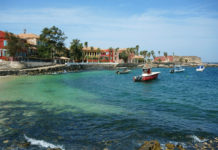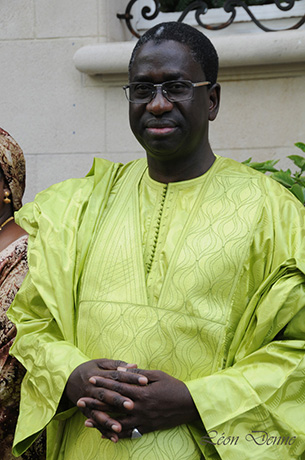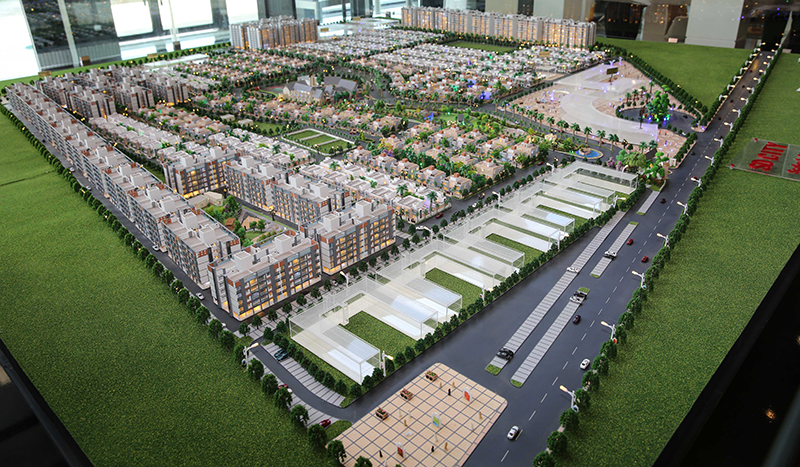 Senegal is a regional hub for West Africa. Many international companies set up their headquarters there in order to export goods and services to the whole African continent. The country has many undeniable assets; a democratic political stability, economic growth and many most favoured nation agreements with key partners.
Senegal is a regional hub for West Africa. Many international companies set up their headquarters there in order to export goods and services to the whole African continent. The country has many undeniable assets; a democratic political stability, economic growth and many most favoured nation agreements with key partners.
In January 2014 in Paris, Senegal presented the « Plan Senegal Emergent » which should transform the deep economy in order to sustain its growth and bring more welfare and wealth in the urban and rural population. That plan has already convinced donors and begins to bear fruit.
“Senegal Emergent Plan responds to an imperative: we must immediately put our country on the path of progress, for a profound transformation of the structure of our economy, greater social justice and the pursuit of our governance efforts. “Macky Sall, President of Senegal.
Transform the economy to provide more social and economic well-being, a noble and ambitious goal. To achieve this, many resources are available; action plan, strategic axes, priorities and key-reforms as well as many projects depending on public-private partnerships. The ultimate goal; make Senegal an emerging country by 2035 through a sustainable growth of around 7%.
To achieve this goal, major reforms in the areas of energy, estate, logistics and infrastructure, information technology, communications as well as business environment should be carried out.
During the presentation of the PES in Paris, in presence of the the donors, the initial objective of the government was to obtain financing up to 1.853 billion FCFA for the period 2014 to 2018. The plan requires funding overall 9.988 billion CFA francs.
The initial goal was far exceeded. After the roundtable, President Macky Sall said the commitments of partners amounted 3,729.4 billion CFA Francs.
The PSE is based on three separate strategic axes, which, however, are complementary. The first axis is based on the transformation of the economic structure, focusing on the creation of wealth and jobs. The second focuses on human capital, expanding social access and preserving the conditions for sustainable development, respecting the principles of good governance and regional integration, the latter forming the third axis, vital for successful emergence.
The plan is in its third year of implementation. The results look positive: amongst the 27 flagship projects, 17 were launched, ten are in the execution phase, an operational phase and six in the study phase. Now, what are the most important projects of PSE?
Unclog Dakar
Senegal’s capital city has 3.2 million inhabitants and has been facing- for years- many problems of mobility. Dakar is the economic heart of the country, 50% of industrial units established in the city. To allow Dakar to live better, Diamniadio, a multifunctional urban platform, has been imagined . This new town located just thirty kilometers from its big sister is obviously one of the most important projects underway for the time being.
Increase of energy capacity
The need for electricity has exceeded the supply for several years, making the increase in energy production capacity a priority of Senegal Emergence Plan. According to the World Bank, annual growth was slowed between 2006 and 2011 to 2 points because of rolling-blackouts.
Since 2012, an action plan has been finalized. Modernizing Sénélec2, with the support of donors (AfDB and World Bank), is needed to strengthen the network and optimize resources management.
The integrated recovery plan for electricity provides a serie of measures that will ensure the increase of the country’s production capacity.
As a consequence of that, Kayar – the coal plants – (350 MW), Sendou (125 MW) of Tobène (thermal oil and gas, 70 MW) and Contour Global at Cap des Biches (86 MW following the extension in September) already enhance the production.
However, the PES also gives priority to sustainable energy with the flagship project of hydrocarbon supplies. Public-private partnerships, in collaboration with the European Investment Bank, will give rise to new plants.
The universal energy service is a project particularly close to the heart to President Macky Sall. The government is committed to not only lower the price of electricity 1, but also to ensure at least 60% rural electrification by 2018 with a minimum of 30% by area/region. This is vital to maintain a minimum population on the countryside.
As a matter of fact : if urbanization is growing steadily in Senegal2, agriculture, which is a priority of the PES through self-sufficiency in rice, can not work if young people are deserting the countryside.
Agriculture and self-sufficiency in rice
With 4 million hectares of arable land and 460 000 ha of irrigable fields, including 130,000 ha especially equiped, Senegal is definitely an agricultural country. The agriculture goals are simple but crucial: to achieve self-sufficiency in rice, onions and potatoes.
Total demand for rice for the Senegal’s population is over one million tons. Domestic production reached 559,000 tons in 2014 but had a good significant peaking at 906,000 tons in 2015.1 The goal of rice self-sufficiency by 2018 is underway, we are expecting next year’s results.
The other flagship projects are dealing with :
- the restructuring of the peanut industry, a Senegalese specialty, mass produced each year, and that could bring even more,
- development of 3 or 4 cereal corridors,
- the accelerated development of aquaculture,
- 100-150 targeted aggregation projects on the rubber and breeding sectors
- as well as support to family farming micro-projects.
- We also have to mention the rural farms in the La Valette area where living conditions have been improved by the creation of jobs in Natanguées farms. The program will create 5,500 direct and permanent jobs through the gardening and 13,750 indirect through farms. Coaching and training are provided to young people who are thus offered a future full of opportunities in their home region.
Health care for all
President Macky Sall wants to make health care accessible to the widest number of Senegalese. The goal is to achieve 75% coverage in 2017. The year 2015 closed with an increase of 12%, bringing the coverage rate to 32%.
To achieve the goal, a new agency was given the mission for carrying out the CMU – universal medical coverage, with a budget of 50 billion FCFA. It should intensify efforts in 2016 and build on the reform agenda of the sickness insurance institutions, the strengthening of existing policies and free care for children under 5 as well as the development of the CMU base via functional health service (mutuality).
We must also mention the “Dakar Medical City”, the flagship project of the future hospital complex with the best technology equipment, similar to those in the countries of the northern hemisphere, India or Turkey. The target of the DMC is to enable Senegal to become a regional hub at medical level. Nearly 10,000 patients should stay in this new city, which should become the medical reference point for West Africa.
Inaugurating the Blaise Diagne airport
“The new Blaise Diagne International Airport Diass (AIBD) will open in eight months.
The project includes an Express high speed train” announced President Macky Sall at the World Economic Forum on Africa in June 2016, in Kigali.
The project was not easy to close because of a disagreement between the Saudi construction group Saudi Bin Laden Group and the Senegalese government. In April, an agreement was reached, leading to the finalization of the project. Airport management has been entrusted to the Turkish consortium Limak-Summa, which is in charge of the supervision of the project (construction).
The location of the airport is ideal: only 45 km east of Dakar, 15 minutes from the new city of Diamniadio and Thies. The terminal building of 4,200 ha has a capacity of 3 million passengers per year and will contain a presidential lodge, six boarding bridges, 44 aircraft parking units and a system of taxiways to the ground able to accommodate the largest aircraft, such as the Airbus A380. The International Airport Léopold Sedar Senghor was built on an area of 800 ha. The new airport should enable Senegal to become a true regional air hub for West Africa.
A fresh start for Senegal Airlines
The airline, which is owned 36% by the state, sees its revenues plummeting and a huge debt of 91.5 million. A new project is necessary to save the company. A scenario is being established to find a viable solution that would allow the national aiway company to regain a strong position at regional level, also through the future opening of the new Blaise Diagne-airport.
Promoting Senegal to attract tourists
The Senegalese tourism experienced a decline of 30 to 40% because of the spread of the Ebola virus in 2014-2015. In addition, the country had already been suffering a slow decline since the 2000s.
President Macky Sall wants to attract tourists back. Good news will strengthen its ambition: building a new Club Med near Mbour on the Petite Côte. Henri Giscard d’Estaing, CEO of Club Med hopes to attract 2 million tourists a year from 2018 on. “The Reserve Saraba” will have 350 rooms on 30 acres and will be the largest investment of that kind in West Africa
In order to facilitate the arrival of tourists, the authorities have recently decided to abolish the visa and to reduce some airport taxes. Plan Senegal Emergent also wants to strengthen welcome tourists facilities, the new Club Med is a first step in this direction.
Furthermore, a huge campaign for promotion of Senegal is currentlu underway. One should not forget that the 700 km coastline, enjoying sweet and particularly pleasant temperatures (19 ° -27 °) throughout the year, make it a destination of choice for tourists. Not to mention the exceptional fauna and flora, the lands of the Sahel in the Sahara, Senegal river, the Sine Saloum Delta and lush mangroves, Djoudj with its myriads of birds, the high forests of Casamance, scenic Saint-Louis, the former capital, Gorée island or the National park Niokolo Koba … a rich heritage in culture and unique history in the world.
According to the Senegalese Agency for Promotion of Tourism, the part of local tourists is 20%, against 80% of foreign tourists. Emphasis will also be placed on the promotion of local destinations to reach 25% of local tourists in 2018.
The PES also provides two key projects to improve tourism: the “integrated tourism zone”, which aims the development of new areas for tourism, and the “sectoral plan of development of micro-tourism”, which will give local people greater economic benefits from tourism.
Financial support to the sector is provided by a funds called “Credit Hotelier and tourism.” Companies that need it can apply for the fund, which can provide with 5 billion CFA francs at reduced rates via 3 offices.
Education and Research
The PES provides a budget of 257 billion CFA francs over five years in the eduction and research sectors. These funds are intended to be used for the construction of two new universities, the laboratory equipment in high schools and the construction of scientific and technological blocks as well as local colleges powered by solar energy.
“Dakar Regional Reference Campus” wants to launch University of Dakar in the top 100 best universities. The project aims to provide higher education to high-level reference (Bac +5 or Bac + 2 + 3) with regional reputation, particularly through the establishment of partnerships with leading international academic institutions.
The Senegalese Virtual University (UVS), launched in 2014, will also benefit from additional 11.052 billion francs.
The number of Plan Senegal Emergent projects is impressive. All may not be achieved properly: some will be real success stories while others will take longer to take off. However, this ambitious plan puts the priority on the emergence of Senegal and wants to improve the welfare of its population so that everyone can enjoy the benefits that will bring economic growth.
Health, education, modernization, electricity … let’s be honest, the program is rather ambitious. The Belgian-Luxembourg companies could certainly use their expertise and experience in many projects. People say that you should always take the first chance.
Gauthier Demaret



